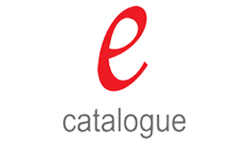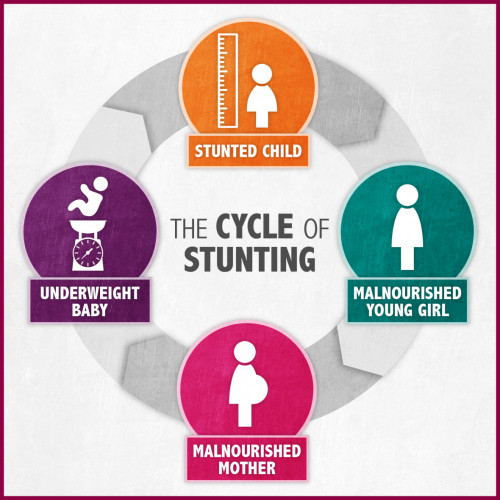Stunting, a condition where children have shorter height compared to their peers, poses a significant global public health challenge. Addressing stunting requires prioritizing improved antenatal care for pregnant women. This article emphasizes the importance of antenatal care in preventing stunting and building a thriving generation.
Adequate antenatal care plays a critical role in preventing stunting. When pregnant women receive proper care, including regular check-ups, nutritional supplements, and appropriate medical support, the risk of stunting significantly decreases. Comprehensive antenatal care encompasses various aspects such as nutrition, health, and education, which are interconnected and mutually influential.
Introduction Stunting, a condition where children have shorter height compared to their peers, is a serious global public health issue. Stunting can hinder physical growth and cognitive development in children, which in turn negatively impacts their quality of life in adulthood. One crucial step in addressing stunting is by improving antenatal care. In this article, we will explore the importance of antenatal care in the efforts to build an excellent generation and overcome stunting.
Antenatal Care: Key to Preventing Stunting Good care during pregnancy is an essential factor in preventing stunting in children. When a pregnant woman receives adequate care, such as regular check-ups, nutritional supplements, and appropriate medical support, the risk of stunting can significantly decrease. Comprehensive antenatal care involves aspects of nutrition, health, and education, all of which are interconnected and mutually influential.
Improving Access and Quality of Antenatal Care To achieve better outcomes in preventing stunting, it is crucial to improve the access and quality of antenatal care worldwide. This includes steps such as:
-
Enhancing accessibility: Increasing access to antenatal care, particularly in remote areas and underserved communities, through improved healthcare facilities, transportation services, and awareness campaigns about the importance of antenatal care.
-
Enhancing health education: Providing proper health education to pregnant women regarding balanced nutrition, the importance of avoiding smoking and alcohol consumption, and appropriate prenatal care. This can be done through educational programs at healthcare facilities, media campaigns, and community involvement.
-
Strengthening healthcare systems: Enhancing the quality and availability of antenatal care services in healthcare facilities by involving trained healthcare providers, adequate medical equipment, and systematic monitoring and evaluation.
- Doing Hemoglobin Screening: Hemoglobin screening also plays a vital role in monitoring the effectiveness of anemia treatment. Regular screenings allow healthcare providers to track hemoglobin levels over time and assess the response to interventions. This helps ensure that the chosen treatment approach is effective and can be adjusted if necessary. Hemoglobin screening is not only important for diagnosing and treating anemia but also for preventive measures. By identifying individuals at risk of developing anemia, such as pregnant women, young children, or individuals with certain chronic conditions, healthcare providers can implement preventive strategies. These may include dietary recommendations, iron supplementation, or lifestyle modifications to enhance overall health and prevent anemia from occurring. Hemoglobin screening provides valuable data for population health monitoring. By analyzing the prevalence and distribution of anemia within a specific population, policymakers and healthcare organizations can develop targeted interventions and allocate resources effectively. This information can guide public health strategies to address the underlying causes of anemia, improve access to healthcare, and promote overall well-being.
PT Isotekindo Intertama provides a practical and convenient POCT (Point Of Care Test) tool for checking Hemoglobin levels in the blood. This tool only requires a small sample of 1µL, making it easy to use. It utilizes the HemoSmart GOLD Hemoglobin Screening Meter, which is the first biosensor technology for screening hemoglobin in Indonesia.
The HemoSmart GOLD Hemoglobin Screening Meter offers the following features and benefits:
-
Small sample size: With only 1µL of blood required, the HemoSmart GOLD Hemoglobin Screening Meter minimizes the amount of blood needed for testing.
-
Wide measuring range: The HemoSmart GOLD Hemoglobin Screening Meter has a wide measuring range of 4.0-24.0 g/dL. This allows for easy monitoring of hemoglobin levels in both low and high conditions.
-
Quick results: The HemoSmart GOLD Hemoglobin Screening Meter provides results in just 5 seconds. Its fast reading time enhances efficiency and saves time.
-
Accurate profile: By utilizing a small sample volume of 1µL whole blood and analyzing whole blood cells, the HemoSmart GOLD Hemoglobin Screening Meter delivers an accurate profile of hemoglobin levels in the blood. This ensures reliable results without causing excessive pain during blood test sampling.
The HemoSmart GOLD Hemoglobin Screening Meter offers a practical solution for hemoglobin level testing, with its small sample requirement, wide measuring range, quick results, and accuracy.
By prioritizing antenatal care and implementing strategies to improve its access and quality, we can work towards building an excellent generation and overcoming stunting, thus ensuring healthier and brighter futures for children worldwide.
References
-
Black, R. E., Allen, L. H., Bhutta, Z. A., Caulfield, L. E., De Onis, M., Ezzati, M., & Rivera, J. (2008). Maternal and child undernutrition: global and regional exposures and health consequences. The Lancet, 371(9608), 243-260.
-
Bhutta, Z. A., Das, J. K., Rizvi, A., Gaffey, M. F., Walker, N., Horton, S., & Group, T. L. B. S. (2013). Evidence-based interventions for improvement of maternal and child nutrition: what can be done and at what cost The Lancet, 382(9890), 452-477.
-
Keats, E. C., Haider, B. A., Tam, E., & Bhutta, Z. A. (2010). Multiple-micronutrient supplementation for women during pregnancy. The Cochrane Database of Systematic Reviews, 2010(10), CD004905.
-
Kozuki, N., Katz, J., Christian, P., Lee, A. C., Liu, L., Silveira, M. F., ... & Group, C. W. (2013). Child health epidemiology reference group of WHO and UNICEF. The Lancet Global Health, 1(1), e25-e26.
-
Victora, C. G., Adair, L., Fall, C., Hallal, P. C., Martorell, R., Richter, L., & Maternal, Child Undernutrition Study, G. (2008). Maternal and child undernutrition: consequences for adult health and human capital. The Lancet, 371(9609), 340-357.







